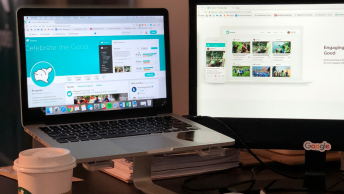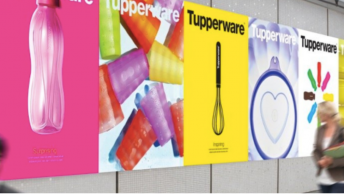No matter the size of your brand, you need to find the most effective methods to build or enhance your digital brand. Using user generated content to build your digital brand is one of the most effective methods you can use today. Continue reading to find out how user generated content can work for you.
If you have done everything to build your digital brand and have not included testimonials, reviews, and comments on your website and social channels, then you should drop everything you’re doing and focus on using user generated content to build your digital brand.
What is user generated content?
Commonly called UGC, user generated content is typically produced by unpaid contributors or fans. It can include testimonials, tweets, blog posts, pictures, video, or whatever the next form of media may be. Most importantly, it involves users promoting the brand rather than the brand promoting itself.
In the article, Finding your consumers desired path to purchase, I talked about how the modern marketing funnel is no longer linear. Now, you must consider all things happening outside of that funnel if you want to convert customers.
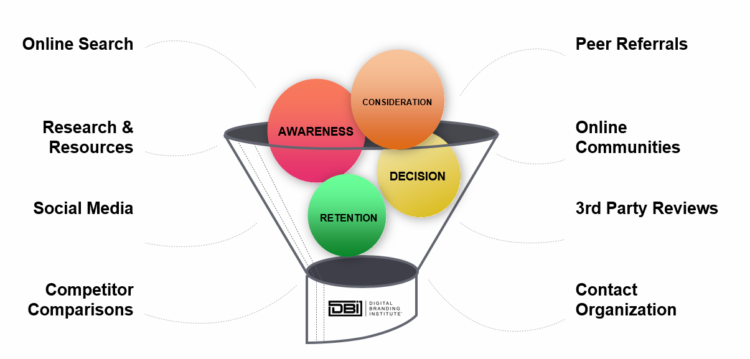
This is where user generated content comes into play. It helps to influence the purchase decisions of your customers when they are not within your funnel.
Bottomline, in our socially connected world, you should strive to build a digital brand conducive for the creation of user generated content without your brand having to initiate the campaign.
Why User Generated Content?
User generated content gives you an advantage as consumers are more interested in hearing the views of their peers than reading content with sales messages infused throughout.
Naturally, if I were to tell a business owner to focus on consumer objectives and not focus on the brand objectives when creating content, I usually get this look:
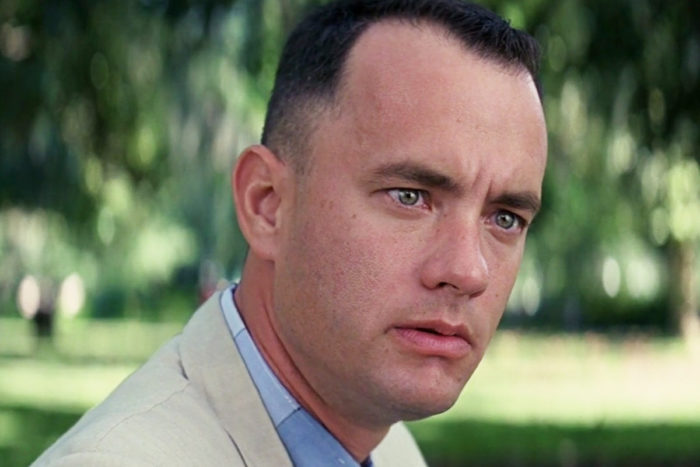
As consumers become savvier, they can easily decipher the intent behind the content.
People are twice as likely to share UGC, and yet brands are still out of sync with consumers when it comes to leveraging trends in this area.
85% of users find visual UGC more influential than brand-generated photos or videos, yet only 65% of brands actually agree. – Adweek
The engagement potential and cost-effectiveness of UGC can make it a powerful tool for brands.
Social ads featuring user generated content perform better because they are more relatable to shoppers, as they feature authentic photos taken by people like them.

Yotpo user Pura Vida Bracelets takes advantage of their customer photos to promote their products on Facebook Ads.
Facebook ads with UGC perform better than an average ad, with 300% higher click-through, 50% lower cost-per-click and 50% lower cost per acquisition rates. – Yotpo
The brand’s ads immediately stand out as they include authentic reviews of verified buyers. This increases the CTR of their ads which ultimately leads to more conversions.
How to Use User Generated Content to Build Your Digital Brand
There are several ways you can implement user generated content to build your digital brand. Here are just a handful of examples:
Involve Industry Influencers
Influencers are individuals with a large following who can expose their audience to your brand. Ultimately, you can leverage their influence to help acquire more customers than if you were to go at it alone.
Here’s a good example.
Adidas’ “My Neo Shoot” Campaign
Adidas launched the #MyNeoShoot social media campaign in 2015 to support its new division of trendy, youth-targeted products.
To help build brand awareness for the Adidas Neo clothing line and #MyNeoShoot campaign, they leveraged the reach and influence of top lifestyle Instagrammers like Selena Gomez, whose look complemented the Adidas Neo brand.
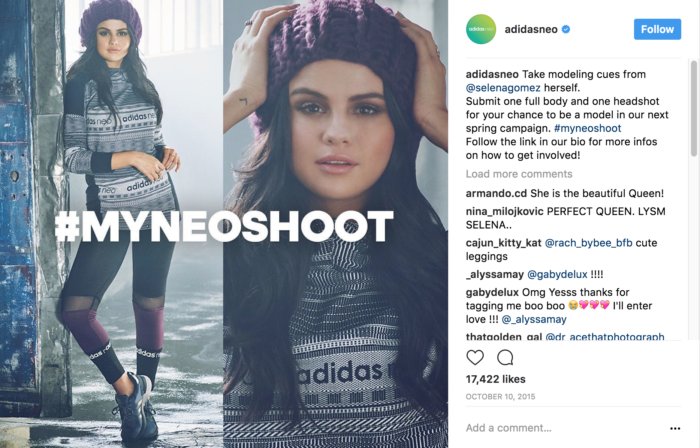
The Adidas #MyNeoShoot campaign is one example of how an established brand can engage new, young audiences by leveraging Instagram’s popularity.
By collaborating with celebrities, Instagram influencers, and ordinary users to promote the initiative, Adidas was able to reach millions of interested consumers.
In the end, the contest helped spark high levels of engagement and solidified Adidas’ as a relevant, youth-oriented lifestyle brand.
Use the Power of Hashtags
Hashtags are perfect for having your target audience contribute to your campaign on social media.
Coca-Cola’s #Shareacoke Campaign
Perhaps one of the most memorable social media campaigns of the last decade is Coca-Cola’s “Share a Coke,” in which the brand produced Coke bottles with customer’s names on the labels and handed them out in different cities across the world.
Coca-Cola also asked customers to share pictures of their personalized Coke bottles on their social media accounts using the “#ShareaCoke” hashtag.
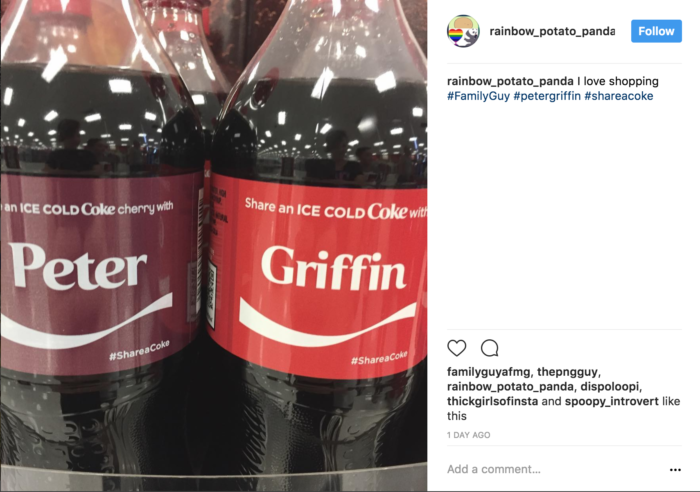
As a result, Coke sold more than 250 million named bottles and cans in a nation of just under 23 million people. The campaign has since made its way around the world, reaching more than 70 countries, to date.
Encourage Customers to Submit Stories
Many brands are turning to their social media channels to encourage user generated content by asking for customers to submit personal stories.
Here’s an example of a company effectively utilizing story-based user generated content:
Loews Hotels “Travel for Real”
Instead of hiring well-seasoned commercial actors to portray happy hotel guests, Loews used photos of actual guests instead.
The guest-fueled inspiration turned into the #TravelForReal campaign. Real travelers shared shots of different Loews properties to capture the essence of each hotel.

Use Community content
Getting your core audience involved is an easy way to develop user generated content as they are already creating content as members of your community. The next step is to leverage this content to create more awareness about your cause.
Here’s a nice example.
Target’s “Read With Me initiative”
In 2010, Target pledged to donate $1 billion to education with a popular college acceptance letter competition.

Throughout the campaign, customers were asked to submit videos of themselves opening their college letters. The best videos were used in a new commercial, which helped Target draw attention to its philanthropic campaign.
Create A Contest
Mint “My Mint Moment” Campaign
During this campaign, the app prompted users to share photos that depicted how their finances turned their lifelong dreams into realities with a #MyMintMoment for the month of January.
They also gave users the ability to upload images through Mint’s own platform if users weren’t on Instagram.
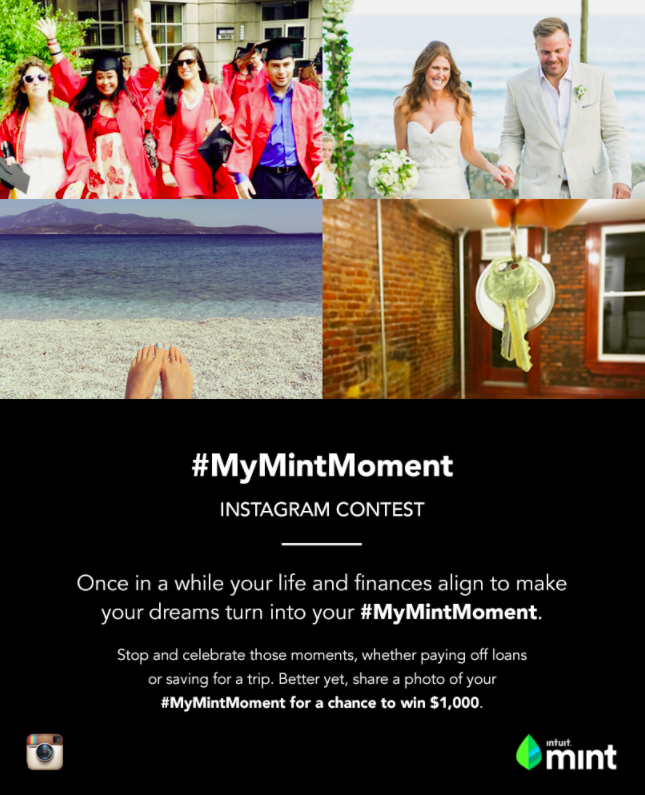
Mint offered a grand prize of $1,000 to encourage submissions of photos of special moments, such as weddings, paying off a loan, or saving for a much-needed vacation.
Social content
Using social media to fuel your campaigns is a great tactic. Here’s a good case study to review.
MUJI “Pen Art” Campaign
Japanese retailer MUJI promoted the use of its pens by launching an art contest on Instagram and Twitter.
Entrants used the hashtag #MujiPenArt to help spread the marketing campaign, but MUJI took it a step further.
Instead of judging the contest themselves, they allowed anyone to vote on Instagram and Twitter.
The company posted fan creations across their own website and social media channels and celebrated winners and popular picks.
Final Thoughts on User Generated Content
In our socially connected world, you should strive to build a digital brand conducive for generating user generated content without your brand having to initiate the campaign.
No matter the size of your brand, you need to find the most effective way to build or enhance your digital brand. So, if you want to create a campaign that requires minimal effort for maximum results, try using user generated content in your next branding campaign.
What do you feel is more effective, launching a user generated content campaign or strictly working with influencers? Let me know in the comments section below…




